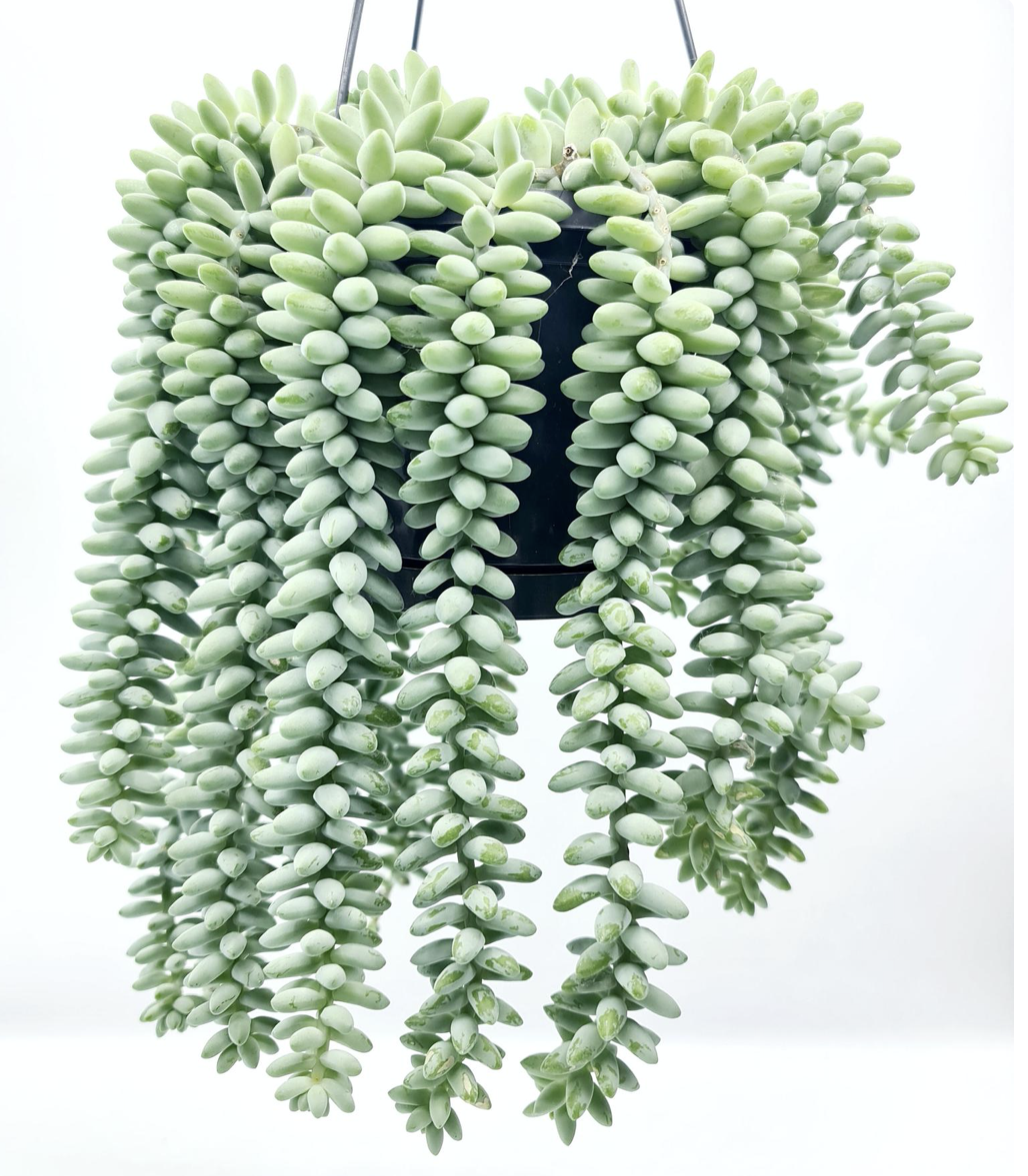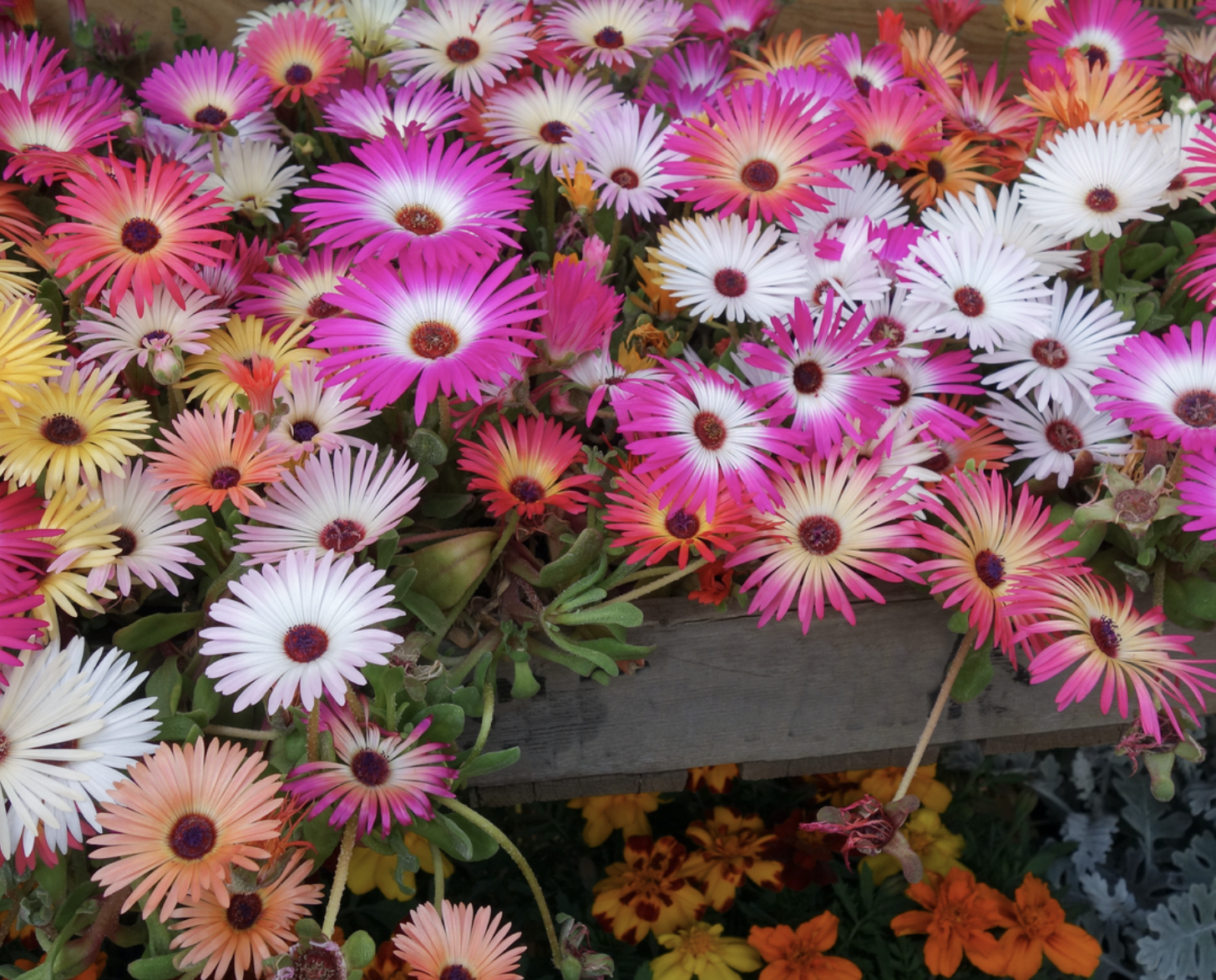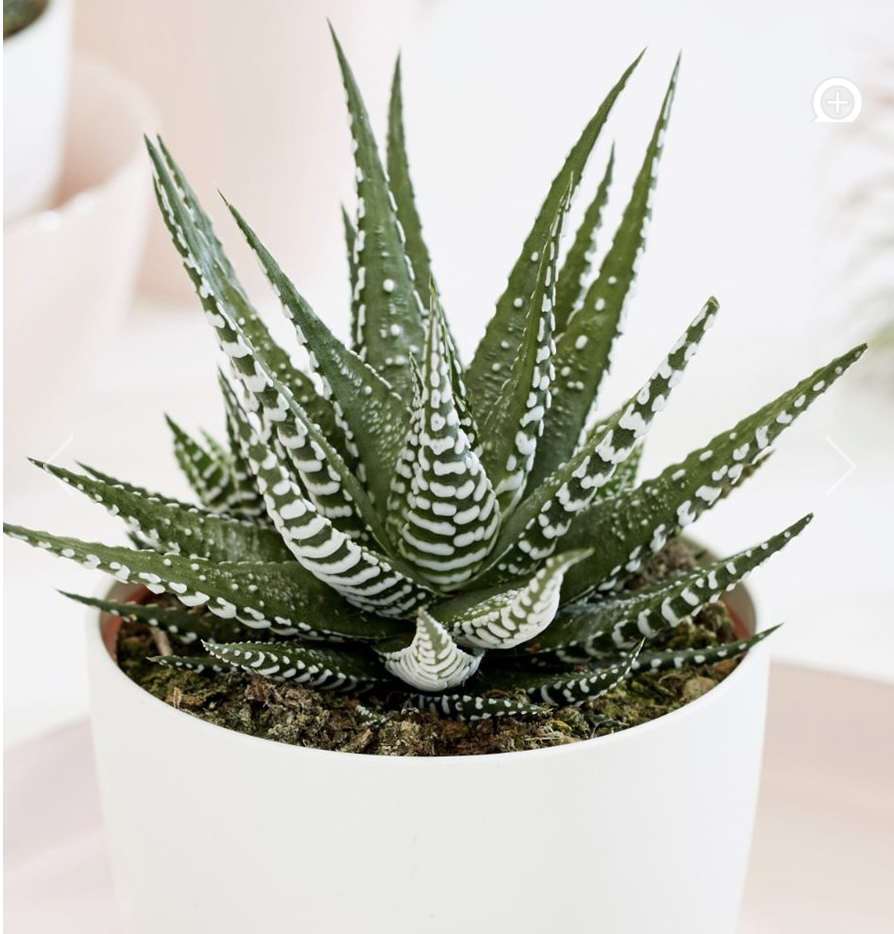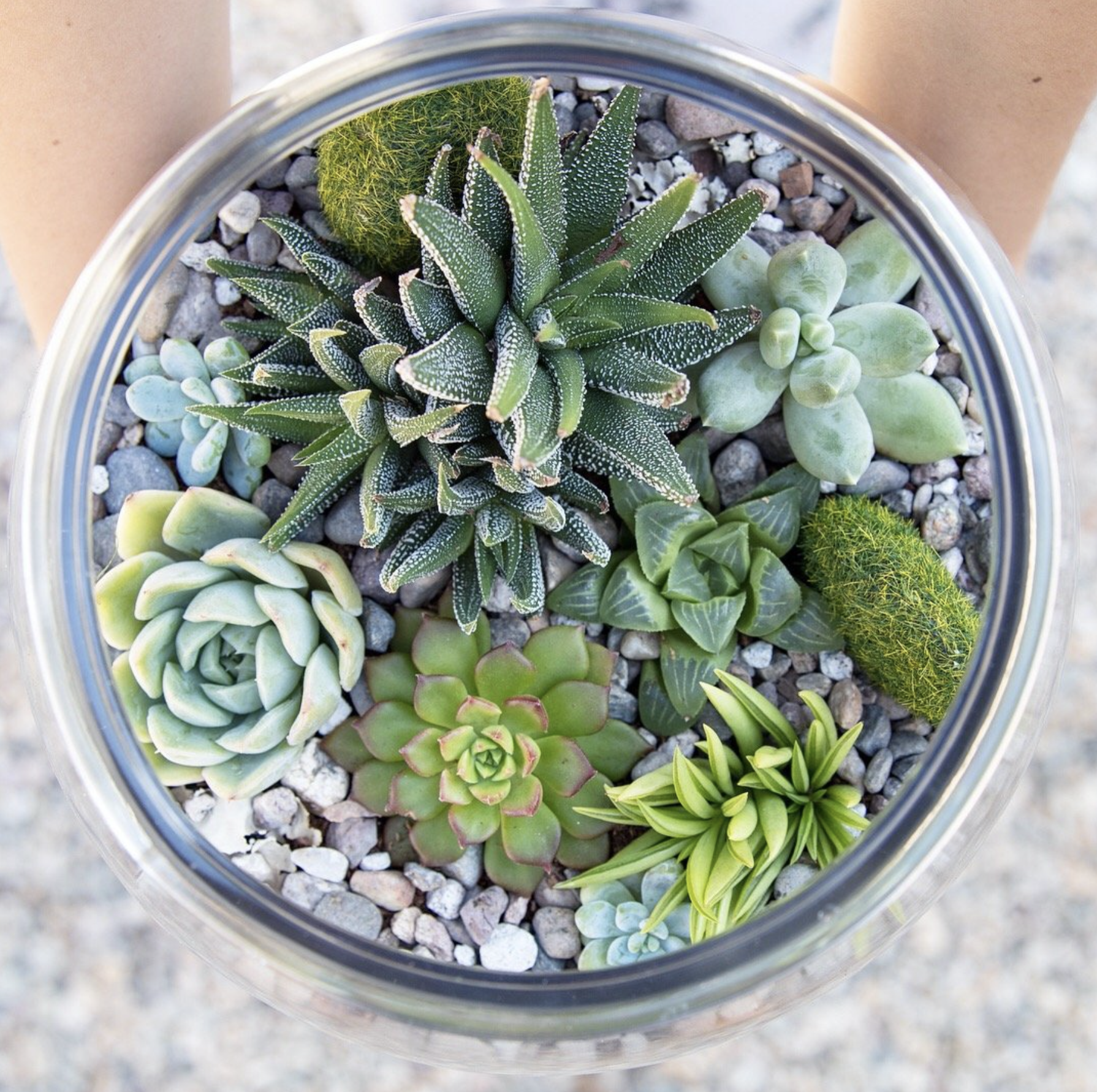We're all going crazy for succulents
Succulents were the height of bohemian chic in the '70s and they're still enjoying a resurgence thanks to a focus on easy-care plants and the need to do something about our indoor air quality. Grower Fiona Weymss of Kent-based Blueleaf Plants gives us the lowdown on these adorable little creatures

I love succulents for many reasons, including that they are (as everyone knows..) easy to look after. They need a sunny spot, though some plants that can tolerate partial shade, and infrequent watering. This means that they can be grown in places that other plants can’t - very hot conservatories for example. Of course they do need some attention, but can be left for several weeks when you go on holiday. And a question I'm asked all the time is 'can my succulents live in the bathroom?'. Simple answer - no, especially if you have an internal bathroom with no window. They don't like water and they don't like the dark!
Succulent. It's a word that conjures up juicy deliciousness and there's an obvious reason why certain family of plants are called succulents...their leaves are fat with water. Which means you don't need to water them very much at all. And that makes them a hit with homeowners who want plants indoors, but only ones that won't peg out on them. Because keeping house plants alive is something a lot of find quite a challenge.
Keeping succulents alive, on the other hand, isn't hard to do. And once you get the collecting bug, you will find you start being quite artistic in your displays because succulents lend themselves to groupwork...one on its own doesn't make much impact, but have a few together and they have an uplifting green presence in your home. And garden, because they can be used outside in rock gardens, for example, or on green roofs.
Succulents aren't pretty in the way flowers are, but they are handsome plants and I love their versatility. Put them in terrariums or arrange them in pots on shelves. Or plant them in teacups or glasses. And they're wonderful to use as table decorations at big events such as weddings.
Small is beautiful
Many succulents are small and therefore don’t take up a lot of room. This means you can build up collections of your favourite plants and put them on windowsills, and they remain manageable. Choose from a huge selection of shapes, colours and textures, and most containers can be adapted to house them - from colourful tins and teacups to shells and jars. The key thing to remember is to ensure drainage or be very careful not to waterlog your plants.
Indoor air quality
Keeping succulents indoors is good for air quality as plants absorb CO2. I like to have a handful of plants in our bedroom because I like to think of them absorbing the carbon dioxide we breathe out while we sleep. Succulents have a modified photosynthetic process that has been adapted through living in arid conditions. This is known as the Crassulacean acid metabolism, or CAM process. CAM plants don’t generally transpire during the day (ie open their stomata to release water vapour) as this means in hot climates they would lose too much water. Instead they keep stomata closed during the day and open them at night and collect carbon dioxide for use during photosynthesis. There’s also an argument that transpiring plants increase humidity and are therefore good in centrally heated homes - studies in Norway show that growing plants indoors helps you avoid dry skin and coughs and colds...
Water..or lack of it
If you live somewhere where water's scarce, succulents are the obvious plant to go for because they don't need much watering; and while we're hardly an arid country...yet...many parts of the UK are drier than they were 20/30 years ago, so it's worth getting to grips with succulents if you're a plant lover.
These plants may have:
Fleshy leaves (e.g. echeverias and pachyphytums)
Fleshy stems (cacti)
Fleshy stem-root structure (haworthias)
Types of succulent
Lots of you will be familiar with succulents such as agaves, aloes and euphorbias if you've been on holiday to Spain or the US because these plants proliferate in hot arid regions. However succulents grow wild in many different environments throughout the world and plants from the northern hemisphere include sempervivums (houseleeks), sedums (stonecrops) and saxifrages. Many grow naturally in alpineconditions and are hardy here in the UK. More exotic succulents can be grown as specimens in pots outside in summer and under cover in winter and many make ideal house plants.
Popular succulent groups
Echeveria
This is a large genus consisting of plants with fleshy leaves that may grow in a stemless or shrubby branching rosette formation. The plants look similar to sempervivums at first glance, and can be confused with this species. Echeverias are native to Mexico and parts of central and southern America where they grow in mountain areas, which means they can also withstand quite low temperatures. Leaf colours vary greatly from pale green to opalescent mauve and black, with wavy edged or plump and hairy leaf shapes and textures.
In the UK, a number of varieties are commonly grown as bedding plants because of their tight, compact form and are used in floral clocks and civic crests at seaside resorts. These plants are now becoming popular in wedding displays and bouquets. Many echeverias are half-hardy and some can be overwintered outside if kept dry and frost-free. Most plants offset readily and will eventually form clumps with nodding bells of pink, yellow and orange flowers in the spring and summer. The wide variety of species and cultivars mean that echeverias easily complement other succulents when grown in containers, but look equally spectacular as specimen plants. Beautiful varieties include Echeveria agavoides, Echeveria affinis and Echeveria lilacina.
Haworthia and Gasteria
Haworthias are a large group of striking, architectural plants, often with spiky leaves streaked or blotched with attractive white markings. They are native to southern Africa, and are generally small to medium-sized plants that form spiky clumps. Striking varieties include Haworthia reinwardtii, Haworthia arachnoidea and Haworthia truncata and the Zebra plant – Haworthia fasciata – that lots of us will know, which has raised white stripes and blotches on its leaves.
Gasterias are plants with firm, angular leaves that may be variegated and covered in raised bumps, or smooth and shiny. These small to medium-sized plants are slow growing and form clumps. Notable varieties include Gasteria armstrongii and Gasteria verruscosa.
Both groups have attractive flowers that resemble tiny flamingos on tall stalks and make stunning, unusual house and conservatory plants.
Sedum
Another large, varied group of plants that grow in temperate climes as well as central and southern Africa and the Americas. Many sedums are hardy and grown as alpines in containers and rock gardens. They're the ideal turf substitute for ‘green’ roofs as they provide good ground cover and can withstand dry conditions. Sedums come in many forms with many pretty cultivars that complement some of the larger succulents well. Useful varieties include Sedum acre and Sedum morganianum – sometimes known as Donkey’s Tail, because of its trailing habit. Leaves are small, plump and pale green and resemble green beads on a string.
Sempervivum
These small, rosette-forming evergreen perennials provide colour year round. They're decorative plants and indispensable for the rock garden, raised bed, scree, dry wall or trough. Sempervivum originate in the mountain areas of Europe, central Asia and North Africa where they often grow in rock crevices. Although the plants have attractive flowers, they're grown mainly for their colourful, architectural foliage. Flower colours range from pink and red to purple, white and yellow. A close cousin, Jovibarba, is very similar but has the benefit of not being monocarpic – this means, unlike Sempervivums, it does not die after flowering.
Aloe
Most people are familiar with the species Aloe vera as it is used in a range of household products for its soothing and medicinal properties. However, this plant group includes a wide variety of plants, ranging from trees and large branching shrubs to tiny delicate specimens. Mostly native to southern and eastern Africa, aloes look fantastic as specimens and some large, older plants can withstand British winters outdoors. They produce bright colourful flowers in red, orange and pink. This group contains many varieties suitable for houseplants and some can tolerate partial shade, as well as being tough as old boots. Popular varieties include Aloe atristata and Aloe variegata (the partridge-breasted aloe).
Agave
Agave americana will be recognised by people who have travelled to Spain, where these Mexican plants have naturalised. It is also known as the century plant to reflect it’s infrequent flowering when huge, towering flower spikes are thrown out from the crown at terrific speed. Agaves are great statement plants but not all are huge, which means they can also be grown in containers in conservatories and on patios. Beautiful forms include Agave filifera, which has white markings and curling fronds and Aloe stricta with red-tipped needle-like leaves.
Mesembryanthemum
These are a huge group of very small succulents, with fleshy leaves and mostly with brightly coloured daisy-like flowers. It includes lithops (sometimes known as living stones), fenestraria, conophytums and lampanthrus species. The hardiness of some mesembryanthemums makes them popular for sunny seaside borders.







